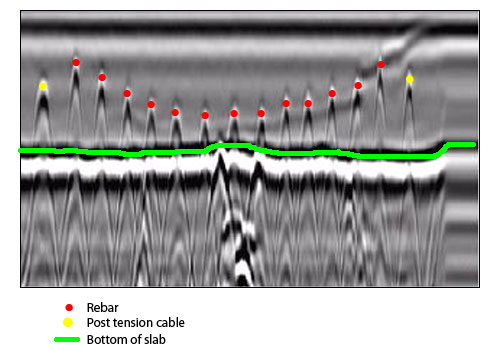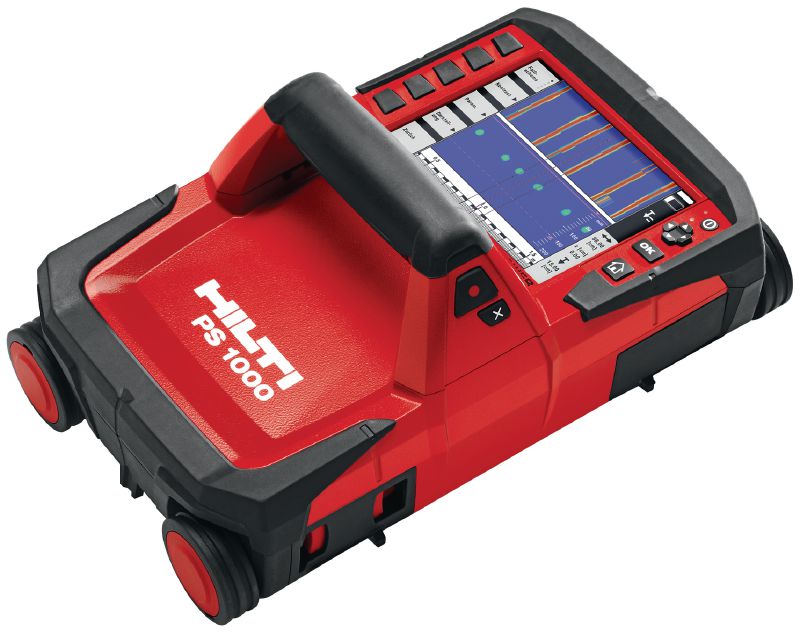RainierGPR Concrete Scanning: Ensuring Safety And Security and Performance in Building and construction
The Value of Specific Concrete Scanning in Finding Underground Hazards
The capacity to precisely spot and map these below ground dangers is not merely an issue of benefit yet a vital aspect of guaranteeing the safety and security of both building workers and the stability of the task itself. By deploying sophisticated scanning technologies and methods, professionals can uncover surprise risks, stop costly damages, and eventually lead the way for smoother and more secure building and construction undertakings.
Advanced Scanning Technologies for Detection
Advanced radar systems are changing the area of below ground discovery by offering unequaled accuracy and performance. These advanced scanning innovations make use of ground-penetrating radar (GPR) to create in-depth photos of subsurface frameworks, supplying insights into what exists beneath the surface area with impressive clarity. By releasing high-frequency pulses into the ground and determining the representations, radar systems can recognize variants in material structure and identify below ground hazards such as spaces, cables, and pipes.
One of the essential advantages of these innovative radar systems is their non-invasive nature, permitting comprehensive assessments without triggering damages to the existing structures. This not only ensures the safety of the surrounding setting however likewise reduces the need for costly fixings or interruptions to ongoing construction projects. In addition, the real-time information given by these scanning innovations allows quick decision-making and improves general project efficiency.
Relevance of Subsurface Mapping

Exact subsurface mapping assists in stopping expensive problems to existing below ground facilities, reducing the risk of accidents, and maintaining project timelines. It allows project managers to make informed choices regarding website planning, devices implementation, and resource allotment. Additionally, subsurface mapping enables for much better sychronisation among different groups working with a task and aids in adhering to governing requirements connected to below ground utility detection.
Mitigating Threats in Construction Jobs
Effective risk reduction methods are necessary for guaranteeing the success and safety and security of building projects. Identifying and resolving prospective threats prior to they escalate is crucial in maintaining job timelines, budgets, and overall top quality. One essential element of mitigating threats in building projects is thorough preparation and assessment at the initial phases. Carrying out comprehensive website surveys, including exact concrete scanning for underground threats, can assist in determining prospective issues early on. Making use of advanced innovations like ground-penetrating radar and electromagnetic induction can assist in discovering energies, rebar, or other obstructions that may present dangers throughout building.
Additionally, developing clear interaction networks amongst all project stakeholders and guaranteeing stringent adherence to safety methods are crucial elements of danger mitigation. Normal examinations, quality assurance steps, and tracking of work development can aid in determining and dealing with any type of arising threats without delay. In addition, having contingency plans in position for unexpected difficulties can substantially decrease the impact of disruptions on the job. By proactively carrying out durable danger reduction techniques, building and construction jobs can minimize delays, cost overruns, and security incidents, eventually bring about effective task results.

Stopping Pricey Damages and Delays
To minimize monetary losses and job troubles, effective techniques must be next applied to stop expensive damages and hold-ups in building and construction projects. One critical means to achieve this is by conducting extensive concrete scanning before any kind of excavation job starts. By utilizing advanced scanning technologies such as ground-penetrating radar (GPR) and electromagnetic induction, construction teams can accurately spot underground risks like rebar, channels, and other utilities. Identifying these blockages early on helps in preparing the task format extra successfully and staying clear of possible damages throughout excavation.
Additionally, spending in training programs for building employees on the importance of concrete scanning and safe excavation methods can significantly lower the danger of accidents and delays. Clear communication channels between task supervisors, engineers, and on-site workers are also vital to make certain that every person is conscious of the potential threats and complies with the necessary procedures to protect against expensive problems. By prioritizing aggressive steps like concrete scanning and promoting a society of security and awareness, building and construction projects can lessen the financial impact of unforeseen below weblink ground obstructions and stay clear of costly hold-ups.
Ensuring Security of On-Site Personnel
By prioritizing aggressive measures such as detailed training programs and clear interaction channels, building and construction projects can make sure the safety and security of on-site personnel amidst the potential threats spotted via concrete scanning. Correct training equips workers with the knowledge and abilities required to navigate construction websites securely, specifically when threats are recognized via scanning processes. Training ought to cover danger acknowledgment, emergency situation procedures, and the appropriate use of individual safety tools to mitigate threats efficiently.
Furthermore, developing clear communication channels is important for disseminating info concerning recognized threats without delay. This ensures that all on-site employees understand prospective risks and can take required safety measures to prevent mishaps. Normal safety and security instructions, tool kit talks, and regular updates pertaining to scanning results aid keep everybody notified and proactive in maintaining a safe workplace.
Furthermore, implementing rigorous adherence to safety and security procedures and policies, carrying out normal safety audits, and fostering a society of security consciousness among employees are essential elements in guaranteeing the well-being of on-site employees throughout building and construction projects - RainierGPR Concrete Scanning. Proactive precaution not only shield employees from harm but additionally add to the overall success and performance of the job
Final Thought
Utilizing advanced scanning innovations and subsurface mapping assists mitigate risks in building and construction tasks, stopping pricey problems and delays. It Web Site is vital for building and construction firms to prioritize the use of specific scanning techniques to lessen prospective dangers and ensure a smooth building procedure.

By proactively applying robust risk mitigation approaches, building and construction tasks can reduce delays, price overruns, and safety incidents, inevitably leading to successful task results. - RainierGPR Concrete Scanning
To lessen financial losses and project troubles, reliable methods should be applied to prevent costly damages and delays in construction jobs. By focusing on positive actions like concrete scanning and promoting a culture of safety and understanding, construction projects can lessen the financial influence of unexpected underground blockages and prevent expensive hold-ups.
By prioritizing proactive procedures such as extensive training programs and clear interaction networks, construction jobs can guarantee the security of on-site employees in the middle of the possible risks identified with concrete scanning. Utilizing advanced scanning modern technologies and subsurface mapping assists minimize threats in construction tasks, preventing costly damages and hold-ups.